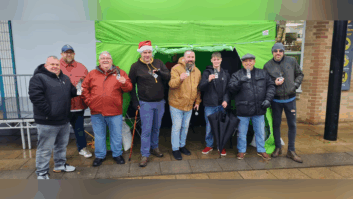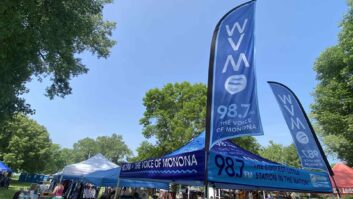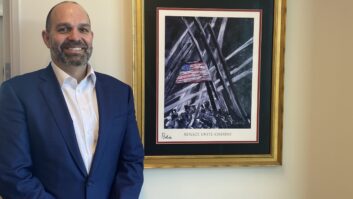How many times have you heard, “Radio doesn’t work, we tried it and got nothing from it”?
A little digging usually finds the client ran two awful spots per day ROS for two weeks 15 years ago. Bad copy and a teaspoon of airtime completely explain why many retailers shun radio.

iStockphoto/ jamesbin We in the biz know radio advertising does work or else we wouldn’t be getting paid. Radio works when it’s done right, which I believe is rare. Good advertising successfully sells products and services and enriches customers and stations, but a substantial number of radio ads I hear are an ineffective waste of airtime and client’s money. Repeat business comes when customers know and appreciate and even document the sales boost from radio advertising.
Since most people listen to broadcast radio in cars to and from work, commercials or “spots” should be designed with this audience in mind. There are lots of distractions while driving, and many stations on the dial. Drivers don’t have pen and paper to copy phone numbers, and when they get past their irritation threshold, they punch a button for another station for relief from the air pollution.
But spots that hold their attention are built with the application of simple principles.
HEADLINE GRABBER
You have about three seconds to get your hooks into the listener’s ears before they tune out. A strong topic sentence and optional sound effects, like echo or music burst, draw the listener to endure the rest of the spot. Otherwise, you’ve lost them.
“There are 20 chemicals in tobacco smoke that can kill you. You can avoid those by using a non-tobacco vapor inhaler from Bob’s Smoke Shop.”
CHOOSE THE RIGHT DURATION
Except for political season when agencies pelt stations with :60s, nobody suffers through :60s to the bitter end; we tune-out.
The American attention span is almost immeasurably short. Thirties are best for must products, and services :15s work well as bookends for established products on both sides of the news at TOH. Keep it simple and direct, short and sweet.
CLEARLY IDENTIFY THE PRODUCT OR SERVICE
The listener should know exactly what’s being pitched by brand, make and model.
“We’re talking about the all-new Veeblefetzer Model 2100 food processor that’s revolutionizing commercial food preparation!”
Contrived dialog exchanges may amuse but don’t sell. Sappy jingles with mushy lyrics went out with The McGuire Sisters harmony in the 1940s. Radio advertising isn’t a school board meeting, so sound enthusiastic about that great product! Remember the epiglottal push — use it.
MAKE A CLEAR CASE FOR BUYING
Advertising either plants a buying motive or elevates a pre-existing buying propensity in the listener. Stress benefits over features.
“This revolutionary shop vacuum cleaner will suck a golf ball through a garden hose” rather than “It’s made of sturdy aircraft aluminum.” Make it clear why they should transfer money from their account to the advertiser’s account.
Use pressure. “Get yours today!” and “This is a limited time offer, so hurry!’ works in many cases to goad buyers into buying.
TELL THEM WHERE TO GET IT
This is tricky. Tell them to enter a phone number into their smartphone or use a simple memorable Web URL You can buy a URL for a few dollars and have it forwarded to the customer’s main website.
MyNewBracelet.com is easily remembered; schwartzandjonesimports.com is not.
For local retail stores, use street intersections and “across from the Starbucks” references rather than a five-digit address. Stores rarely have their street numbers posted on the building where shoppers can spot them.
CLOSE WITH A SUMMARY
Use a tagline like: “That’s John’s Bargain Store for the best selection in camping gear, Elm and Main streets across from Walgreens.”
From :25 to :30 you’ve told them what it is (camping gear), why to buy (best selection) and where to get it (Elm and Main).
Reassure them: “You’ll be glad you shopped at John’s.”
EMBED A TRACER ELEMENT
The best way to test the effectiveness of your spots is to sew a seed like “Tell them you heard about it on WJBP and you’ll get a 5 percent discount!” Instruct the counter clerks to ask how the customers heard about the product and keep a log.
ROTATE MULTIPLE SPOTS
Even good spots get really annoying with repetition.
I’m at the point where I’m going to stop listening to CBS Radio News at TOH because I’m sick to death hearing about ProActive Plus-brand tooth whitener. I want to slam the radio.
There is no excuse for not producing at least three spots that use similar pitch and copy but are written and produced so they sound distinctly different. Annoying and boring your listeners is not endearing and causes product avoidance rather than embrace and purchase.
SELL ENOUGH SPOTS TO BE EFFECTIVE
Granted, selling radio advertising is a very hard way to earn a living. Upstarts are proud when they can sign up the local bakery for three spots overnight for a week. But that is completely useless unless you’re pitching sleeping pills to insomniacs.
The hard truth is that advertising is inefficient. You need to do a lot of it for few initial results, then keep on doing it until the cumulative effect kicks-in. Advertising is a long-term proposition and it costs serious money. Only the strong survive. Businesses that can’t afford to advertise are doomed to the dustbin of history.
GOOD COPY, GOOD RESULTS
A colleague opined: “Just like having good content in programming is vital, so should the same be in spots. How many people anticipated, not avoided, spots by Stan Freberg and Joe Sedelmaier? Many of their spots have become iconic Americana. Copywriting should not be a task dumped off on interns; it should be the proud production of the best and brightest on the staff. Good ad copy is entertaining and enjoyed, with likewise good results for the sponsor. Bring interesting personalities and compelling content, and listeners and advertisers will follow.”
Good radio commercials make paychecks possible because good spots get results for our customers; they actually sell products and services and make money for all concerned.
When our customers realize the fruits of their investments in radio, the truth is self-evident: Radio does work!
Jim Potter owns the Little Spot Shop. Read more tips at LittleSpotShop.com.
Comment on this or any story. Email[email protected].







